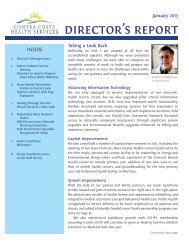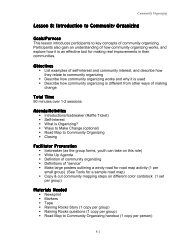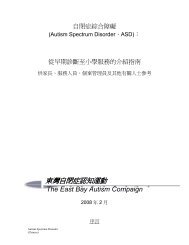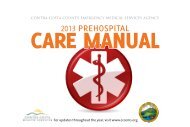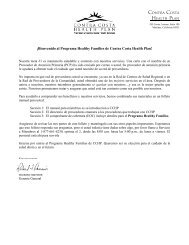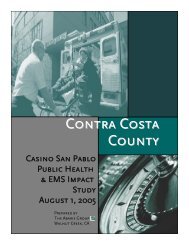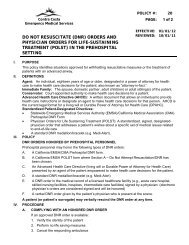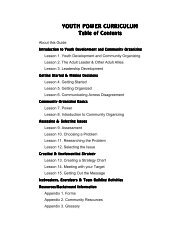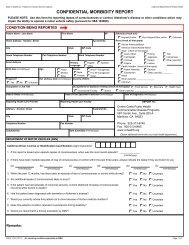EMS Policy Manual - Contra Costa Health Services
EMS Policy Manual - Contra Costa Health Services
EMS Policy Manual - Contra Costa Health Services
You also want an ePaper? Increase the reach of your titles
YUMPU automatically turns print PDFs into web optimized ePapers that Google loves.
<strong>Contra</strong> <strong>Costa</strong><br />
Emergency Medical <strong>Services</strong><br />
DETERMINATION OF DEATH<br />
IN THE PREHOSPIAL SETTING<br />
POLICY #: 19<br />
PAGE: 1 of 4<br />
EFFECTIVE: 01/01/12<br />
REVIEWED: 10/01/11<br />
I. PURPOSE<br />
To provide criteria to aid prehospital personnel in determining death in the field.<br />
II. DEFINITIONS<br />
Agent: An individual, eighteen years of age or older, designated in a power of attorney for health<br />
care to make health care decisions for the patient, also known as “attorney-in-fact.”<br />
Immediate Family: The spouse, domestic partner, adult child(ren) or adult sibling(s) of the patient.<br />
Conservator: Court-appointed authority to make health care decisions for a patient.<br />
Advanced <strong>Health</strong> Care Directive (AHCD): A written document that allows an individual to provide<br />
health care instructions or designate an agent to make health care decisions for that person. AHCD is<br />
the current legal format for a living will or Durable Power of Attorney for <strong>Health</strong> Care (DPAHC).<br />
Standardized Patient-Designated Directives:<br />
• Statewide Emergency Medical <strong>Services</strong> Authority/California Medical Association Prehospital DNR<br />
(Do Not Resuscitate) Form<br />
• Physician Orders for Life Sustaining Treatment (POLST): A standardized, signed, designated<br />
physician order that addresses a patient’s wishes about a specific set of medical issues related to<br />
end-of-life care<br />
• A standard DNR medallion/bracelet (e.g. Medi-Alert).<br />
III. POLICY<br />
A. Prehospital personnel do not pronounce death but may determine death in certain situations.<br />
B. Prehospital personnel need not initiate CPR or may direct the discontinuation of CPR when<br />
death has been determined using the criteria outlined in this policy, or when presented with an<br />
approved Do Not Resuscitate order.<br />
C. If any doubt exists as to the presence of vital signs, or if hypothermia, drug overdose, or<br />
poisoning is suspected, begin CPR and follow the appropriate field treatment guidelines.<br />
D. The body of a patient who has been determined to be dead from any of the reasons identified in<br />
the Coroner section of this policy shall not be disturbed or moved from the position or place of<br />
death without permission of the Coroner or the Coroner's appointed deputy.<br />
E. If any questions exist about application of this policy base hospital direction may be utilized.<br />
IV. OBVIOUS DEATH<br />
A. Pulseless, non-breathing patients with any of the following:<br />
1. Decapitation<br />
2. Total incineration<br />
3. Decomposition<br />
4. Total destruction of the heart, lungs, or brain, or separation of these organs from the body<br />
5. Rigor mortis or post-mortem lividity without evidence of hypothermia, drug ingestion, or<br />
poisoning<br />
6. Mass casualty situations.<br />
B. Procedure:<br />
1. Do not initiate CPR<br />
2. In patients with rigor mortis or post-mortem lividity:



